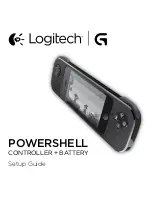
19
8.2.2. Surface Material
Possible objects to be measured include all sorts of materials such as metal, plastic, ceramic, rubber and pa-
per. Suitability for use only needs to be tested individually for highly reflective surfaces and liquids.
8.2.3. Surface Damage on the Object to be Measured
A scratch on the surface of the object to be measured which runs perpendicular to the axis of the lens may
cause stronger light emissions, whose maxima are located next to the center of the spot. An incorrect distance
is simulated as a result.
If a moving object is involved, the mean (integral) measured value remains constant when the damaged sur-
face is scanned, i.e. the positive and negative edges cancel each other out due to the damage.
Undesired deflection can be minimized by selecting a suitable average filter.
8.2.4. Extraneous Light
When installing the sensor it must be assured that no direct or reflected sunlight can shine into the receiver
optics. Where difficult applications are involved, this “extraneous light” may interfere with measured value re-
cording. The measuring point should be correspondingly shaded in such cases.
8.2.5. Changes in Remission
The sensors are equipped with luminous intensity control which is automatically adjusted to the level of remis-
sion from the object to be measured. If remission from the surface changes during measurement, the sensor
compensates for any fluctuation. By selecting a fixed sampling rate, measured values remain accurate even if
surface remission changes.
8.2.6. Dependence of Measurement on Angle
Measurement is minimally dependent on angle if the sensor is not aligned at a right angle to the object to be
measured. Tilting the sensor results in a greater distance to the object. This change in distance can be set to
zero by means of a corresponding offset shift.









































